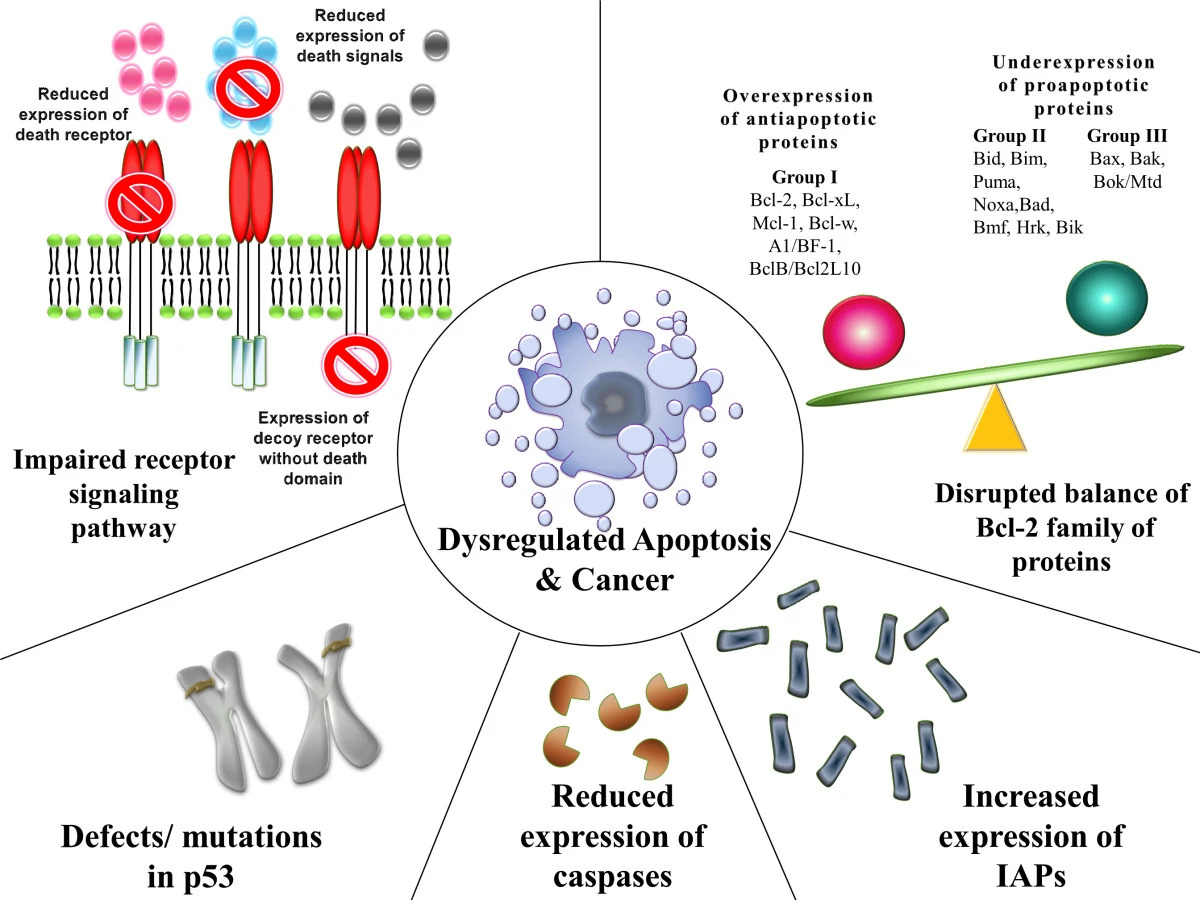Playlist
Show Playlist
Hide Playlist
Cyclins and Cyclin-dependent Kinases
-
Slides CP Neoplasia Cell Cycle.pdf
-
Reference List Pathology.pdf
-
Download Lecture Overview
00:00 So, now we're going to get a little bit more into the weeds, hang in there. This is really interesting stuff, but it can first round be a little bit complicated. So, by all means watch this again. So, how do we actually have these checkpoints? How do we, you know what determines whether we're going to progress or not. I said glibly, yeah we are going to make sure that the blueprint is correct. Well that's only part of it. We actually have to regulate that at the cellular level. So the movement through the cell cycle is dependent on 2 proteins, cyclins and cyclin-dependent kinases or CDK. Okay. So cyclins are proteins that allow for progression through the cell cycle. They are going to be the major go, no, go controller of the process. They work when they are synthesized so the regulation of cyclins is at the level of transcription and translation. So, we will make the protein when we want to go through cell cycle. We will degrade the protein when we don't want to go through cell cycle. So the activity of the cyclins, the ability of the cyclins to do their job is by synthetic control and degradation control. The cyclins function by interacting with the cyclin-dependent kinases. The CDKs are always there. Okay, at some level they're always there. But if I synthesize a cyclin now, it can interact with the CDK and what we get is a phosphorylation of the CDK. So the cyclin-dependent kinase makes sense. It only gets turned on when it interacts with its appropriate cyclin, but it gets turned on and becomes a kinase that can phosphorylate other proteins. So now, my cyclin-CDK complex, as you see there, can phosphorylate phosphate groups from ATP on to other proteins which is the little orange ball. That phosphorylated protein now will allow through probably other additional phosphorylation cascades the cell to progress through cell cycle. When we want to turn off the activity of that cyclin-CDK complex, what we do is we ubiquitinate the cyclin which targets it for degradation and when it gets degraded now my CDK is no longer active. And that's how we regulate kind of cell cycle control through various levels of the cyclins. Alright. Of course it's not just 1 cyclin and 1 CDK, there are a whole bunch of cyclins and a whole bunch of CDKs. So it can become bewildering. And by all means do not memorize this, you don't need to. The idea, however, is to see there are different cyclins expressed at different times during the cell cycle progression that allows to regulate the various stages. So cyclin E as it turns out is going to be really really important for going from that G1 to S phase. And you see that its peak expression occurs right at the interface, at that G1S checkpoint. So it's going to be very important that we have it upregulated so that we can phosphorylate a whole bunch of proteins with the cyclin E-CDK complex to drive it into the next phase. Again, don't memorize this but do appreciate this is how we go through the various phases of a cell cycle. Okay.
About the Lecture
The lecture Cyclins and Cyclin-dependent Kinases by Richard Mitchell, MD, PhD is from the course Neoplasia.
Included Quiz Questions
What action do cyclin-CDK complexes take to promote cell cycle progression?
- Phosphorylation of proteins
- Phosphorylation of growth factors
- Dephosphorylation of proteins
- Dephosphorylation of growth factors
- Decarboxylation reactions of proteins
Customer reviews
5,0 of 5 stars
| 5 Stars |
|
5 |
| 4 Stars |
|
0 |
| 3 Stars |
|
0 |
| 2 Stars |
|
0 |
| 1 Star |
|
0 |




